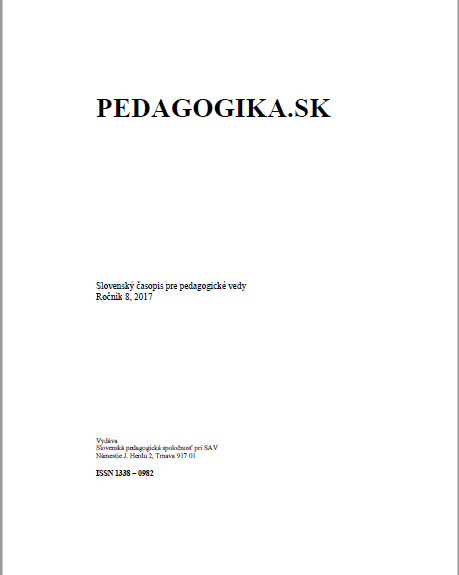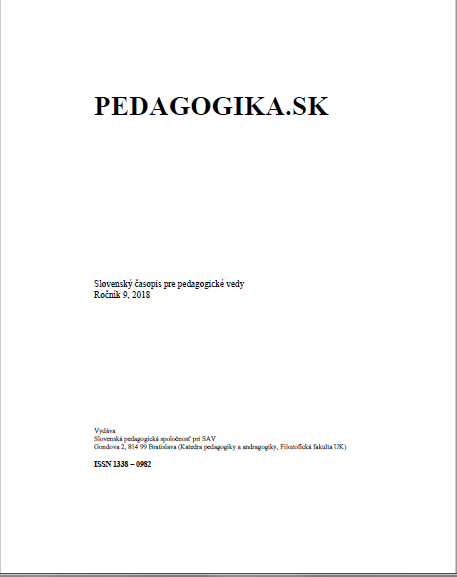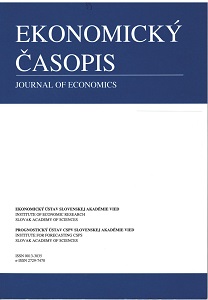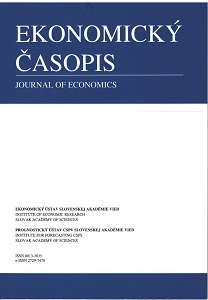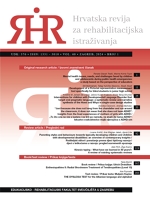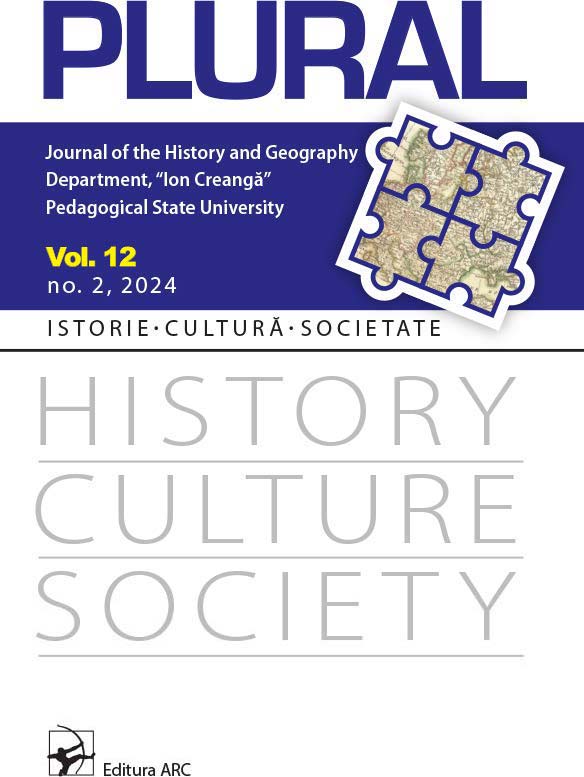Author(s): František Baumgartner,Zuzana Wirtz,Catherine L. Ward,Ivana Poledňová / Language(s): English
Issue: 2/2017
The study is aimed at investigating understanding emotions in relation to aspects of antisocial behavior and substance use with respect to parenting styles. The sample were 397 early adolescents from two countries (Slovakia and South Africa). We examined if similarities or differences existed when comparing both national groups. A number of research studies document that antisocial behavior (e. g. bullying) is connected to the attitudes towards antisocial behavior so that specific attitudes predicted bullying behavior and other phenomena such as school and academic performance. The necessity of investigating the field of antisocial behavior and its moderators (such as parenting styles and emotional competencies) is not based only on prevalence rates of different types of antiso cial behavior during early adolescence, but also on the fact that risk behavior, in general, is directly or indirectly involved with health, well-being, school success and healthy development of personality. Currently, most scientific research on emotional intelligence focused more on emotional intelligence from the perspective of a trait (emotional self-efficacy), so the purpose of this study was to shed light more on the ability concept of emotional intelligence. We focused on one particular skill of emotional intelligence; understanding of emotions, as this ability forms the basic skills of emotional intelligence. The majority of the studies of early adolescent emotional intelligence skills have been conducted in Western societies, but processes underlyin g the formation of behavior and ability emotional intelligence factors and their manifestations may differ across cultures. There is an obvious influence of tradition, culture, ethnicity and society on the experience and expression of emotions, strategies for dealing with stressful situations, and behavior itself. Our study tries therefore to fill the gap in the literature by investigating the relationships between the ability to understand emotions as an emotional intelligence skill and antisocial behavior in early adolescents from very different countries; namely South Africa and Slovakia. Two groups were studied – one in Bratislava, Slovakia (Eastern Europe), and the other in Cape Town, South Africa. In Slovakia, all 6th graders from five state primary s chools that agreed to participate were approached for research matters. From that group, 155 learners were enrolled in study. The average age of this sample was 12.09 (SD 0.75). In South Africa, 242 students were chosen from three state schools which agreed to participate. The mean age of these students was 11.21 (SD=0.62). The schools were picked from different areas of Cape Town so that different ethnic groups were represented in the sample. All 6th grade students in the selected schools of Cape Town and Bratislava (N=397) were invited to participate, and were allowed to do so if their parents provided written consent and they themselves provided written assent. To measure the emotion understanding as a component of emotional intelligence, a performance test – Situational Test of Emotional Understanding (STEU, MacCann & Roberts, 2008) was used. The STEU is based on Roseman’s model of the emotions system. According to this model, the 17 most common emotions can be explained by a combination of seven appra isal dimensions. Antisocial and risk behavior and attitudes towards antisocial behavior were measured using subscales taken from The Social and Health Assessment Questionnaire (SAHA, Ruchkin, Schwab-Stone & Vermeiren, 2004). For our research purpose we selected several subscales: school attachment, academic motivation, affiliation with delinquent peers, victimization, parenting scales (inconsistent parenting, parental involvement, parental supervision, parental warmth), prosocial beliefs, alcohol use, substance use, cigarette use, antisocial behavior scales (conduct problem, less severe delinquency, severe antisocial behavior, legal consequences), beliefs legitimizing aggression, “hard to say no” scale and expectations about the future. Our study is focused on exploring associations between attitudes towards antisocial behavior, emotion understanding and parenting styles. According to the existing research it was possible to hypothesize: 1. There is a link between higher level of ability to understand emotions with less frequency of involvement in antisocial behavior as well as stronger attitudes against participation in antisocial behavior. 2. The parenting styles including parental involvement, supervision and warmth are connected with less involvement in antisocial and risk behavior. 3. Individuals with higher ability to understand emotions have a better parental background (especially warmth and involvement) in comparison with individuals with lower understanding of emotions. We applied exploratory analysis, calculating Spearman correlations and Mann-Whitney U-test in SPSS (since not all variables were normally distributed) and linear regression (in R) with quasi-poisson distribution, in order to examine associations between ability to understand emotions, antisocial behavior and other variables. A Generalized Linear Model UNIANOVA with quasi-poisson distribution was the most suitable for our data as they were not normally distributed, and did not fulfill the condition of the Poisson model (where mean must be equal to its variance). The analyses were conducted separately in samples of Slovak and South African early adolescents with regard to examining the relationships between key variables in both groups separately, and then to study the differences between them. The obtained results only partly support expected significant associations between higher level of emotion understanding and lower level of involvement in antisocial behavior. On the contrary the linkage between lower level of understanding of emot ions and higher rate of negative forms of behavior was manifest. These relations were only evident with Slovak adolescents, but not with their South African counterparts. Findings also revealed the importance of parenting styles in different areas of early adolescent’s behavior. Parental involvement and warmth diminished the expressed involvement in antisocial behavior as well as substance use and increased pro-social beliefs. Regarding the method used to measure emotional intelligence, we conclude that the performance test of emotion understanding (STEU) is only partly a suitable tool for exploring this construct. First, the STEU – even though modified for this population – had some problems with internal consistency; and secondly, the degree to which these instruments serve as indicators of real life behavior is also questionable. Although our findings support only some relationships we expected to find, we believe that even these findings of associations of ability to understand emotions with some aspects of behavior and influence of parenting style in early adolescence could assist as baseline facts and offer new ideas and inspirational base for further research studies.
More...

